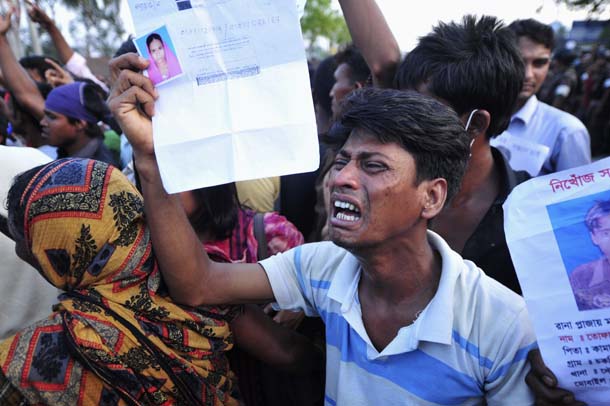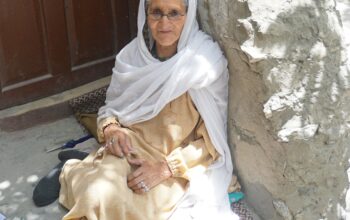The “I want it, I got it” mentality
We shop it, we toss it. Only after a couple of years, or in some cases months. But do we, as the consumer, really consider the working conditions under which our acid-washed denims or cosy coats have been produced? How little money can be spent, without any second thoughts, on numerous pieces of clothing in stores like Primark compared to how little money is received on the other end by the seamstresses?
What is fast fashion?
The term “fast fashion” depicts the speed, at which clothing designs are drafted, come into product and are available for purchase in stores worldwide and online. Fast fashion is mainly characterised by huge amounts, low profit margin, fast-paced production and extremely cheap and disposable items.
Globalisation contributes significantly to the rise of the acceleration of fast fashion, because open markets are existing all over the world and industrialisation is on its peak. Furthermore, the consumer is also responsible for the well-known “I just want that, so badly” mentality, following weekly trends which of course give us instant satisfaction but also lead to mass consumption and an unreasonable shopping of items, we do not need. In most cases the clothing is produced cheaply, hence, it does not last long which then again sends us in an infinite spiral of shopping and tossing.
Developing countries as financial remedy?
We have to ask ourselves why our everyday life clothing is produced in developing countries such as Bangladesh, China or Vietnam. It would make so much more sense for huge apparel companies like Zara or Primark to produce the clothes in the countries they sell it to, right?
Many people would like to believe so, but the EU labour law regulates working conditions that are ought to accomplish high employment and social protection, improve the living and working conditions and help to build a healthy work community. Therefore, the payment for seamstresses is way higher and more expensive for fashion companies in European locations.
Here, globalisation comes into play: To avoid having to pay their workers reasonable salaries many fast fashion companies set up their manufacturing business in Bangladesh. Production there is even cheaper than in China, the previous number one for cheap fashion production, because wages in China have started to rise due to the country’s overall increase in wealth. The minimum wage for Chinese garment workers fluctuates between 100-200 USD whereas Bangladesh’s seamstresses may earn as little as 38 USD per month due to the country’s general lack of regulations.
And of course, the low wages it pays its garment workers make it really attractive to fashion companies giving them an opportunity to reduce their costs and make more profit. The minimum wage in the garment sector, remains one of the lowest in the world, even though the government in Bangladesh raised it as a result to the Rana Plaza collapse.
Mass consumerism and its results
The irresponsible cheap prices of fast fashion clothing brands promote mass consumption solely by their price tags. An obvious example would be the clothing store Primark, where people often leave the store with ten or more items in a huge shopping bag, bragging about their yields. And this word-of-mouth recommendations clearly work for Primark.
Often in our society, clothing and “shopping” is considered a hobby without second thoughts regarding the consequences globally, economically or the exploitation of the seamstresses. After all, it is always a question of demand and supply and the more people that fall for “unethical cheap thrills” the more seamstresses suffer under bad conditions and get exploited for an inhumane minimum wage, often not even able to care for their families. “A report by Sabina Dewans Just Jobs network found that the typical wage in Bangladesh was just 14% of a living wage that would provide for the basic needs of a worker“
Labourers life as commodity: the Rana Plaza collapse
The tragedy of the collapse Rana Plaza which was housing five garment factories in Dhaka, Bangladesh that happened in the year 2013. The collapse of the building killed over 1,132 people and injured more than 2,500. As a result of the disaster, the world finally noticed the poor labour conditions of workers in the garment sector in Bangladesh where millions of low-paid people, most of them children and women, are working in an unsafe work environment with a high occurrence of work-related accidents and deaths, as well as diseases caused by toxic chemicals. Most of the factories are not meeting international standards required by building and construction laws. Therefore, deaths from fire incidents and buildings, which are caving in happen on a regular basis. The worker and their labour are considered disposable and convertible, a commodity to reach fast production under cheap salary.
Alternatives
After all these bloodcurdling news we should ask ourselves how we, as consumers, can change these circumstances. Well, after all it is in our hands: Do we want to act based on laissez-faire principles and just continue to mindlessly consume, or do we want to try and alter the conditions for seamstresses and rebel against this exploiting, inhumane system that treats labourers as commodity and only sees the product and not the person behind it?

To be more political and set strong examples one can always use the streets as a form of protest. Demonstrations against working conditions in third world countries are highly common and frequently made use of. Many seamstresses in Bangladesh, their families and families of the deceased used the uproar after the Rana Plaza incident to protest against their working conditions and to express their mourning.
Another method would be to boycott the fast fashion industry and brands like Primark or Zara that produce their disposable items in countries like Bangladesh under inhumane labour conditions. Thrift shopping in second hand stores is a great, and budget-friendly, alternative. This way we will not support the fast fashion industry and its huge money-stacking, capitalist companies.

Slow fashion brands like Reformation try to set a new example with ethical clothing which, however, does come with a price tag. Reformation sets their aims in using eco-friendly materials and reducing its carbon footprint by manufacturing many of its products close to where they are sold. This means the production, manufacturing and designing takes place close to the company’s headquarters in Los Angeles
Along with every item, their website shows how many gallons of water were used to produce it. Additionally, they are working towards paying 100% living wages extensively. About a third of Reformation’s management team are women, people with a disability or minorities.
Another improvement towards conscious clothing and shopping is the German green button, which since 2018 stands for ethical work conditions, fair fashion and better payment. It is also known as the “world’s first government sustainable textile label” drafted by the federal government in Germany and will make it easier for buyers to recognise ethical fashion. The seal is only awarded to vendors that comply with social and economic minimum standards, for instance minimum wage and sufficient health protection. Certified by external institutions, companies have to prove that they align with those standards to obtain the green button for their clothing.
And if one still cannot resist to buy the cute top presented on the mannequin in the next forever 21 store, one should be aware of the true cost of that little piece of polyester and cotton. There should always be a regard towards the buyers consciousness. In the end, it is always a question of demand and supply.
by Elena Wasserzier
Photo credits
Dhaka Savar Building Collapse, Jaber Al Nahian, CC BY-SA 2.0
BANGLADESH-BUILDING, coolloud,CC BY-NC-ND 2.0
Coat (Humana Berlin), Elena Wasserzier, All Rights Reserved









